
back to The Art of Alchemy: index

This article is also available in PDF format.
|
Alchemical ovens were constructed to be practical, and one can find many engravings and paintings that show the variety of these ovens. In a few cases they were also made as expressions of art, in a simple form, or more elaborate and pricey if one could afford it. Portable Italian Athanor This is a small athanor, an alchemical oven, from Italy, ca. 1700. It is 87cm (34") high. It is made of glazed terracotta. Although it is a practical oven, it is decorated with mascerons (a face ornament), stars and garlands. Its elaborate ornamentation and aesthetic appearance suggest that it once belonged to a high-ranking alchemist. The furnace can be dismantled into three parts, functional elements such as handles and openings have been cleverly integrated into the ornamentation. The lowest part was used to hold coal, which could smolder at low temperatures. The middle part is placed on top, remains of an integrated grid, also made of terracotta, testify to the fact it once held a vessel. Lateral openings allow hot air to escape or substances extracted to be discharged. The upper part, with its pointed top, prevented the untimely cooling of the mixture, which could be kept at temperature for a long time, sometimes referred to as 'digesting' or 'incubating'. It is a simple conical athanor, and we find another example of this type in alchemist Heinrich Khunrath's Warhafftiger Bericht vom philosophischen Athanore, 1615, page 14 (see below). One reason why so few objects have survived may be that they weren’t portable, like the present furnace, or subjected to heavy use. Today, most of these built-in stoves have unfortunately been lost along with their original context. This athanor was published in Raum für Objekte - Ariane Laue Kunsthandel, Kat.VI - No. 17, Munich 2019 Click on images to enlarge. |
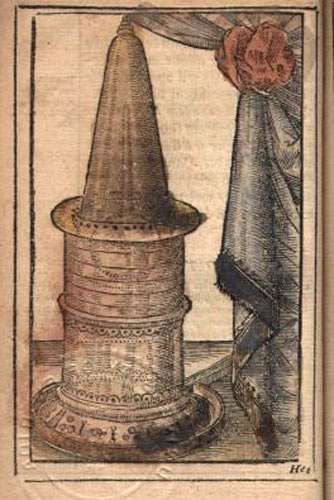
Athanor in Warhafftiger Bericht vom philosophischen Athanore
|
Alchemical Distillation Oven of the Landgrave Moritz, in Germany. This ornamental alchemical distiller was probably manufactured by Christoph
Müller. Its
height is 16 15/16" (43 cm), its width is 16 15/16" (43 cm), and it
weights 48.5 lb. (22 kg) Presently in Astronomisch-Physikalisches Kabinett, Museumslandschaft Hessen Kassel |
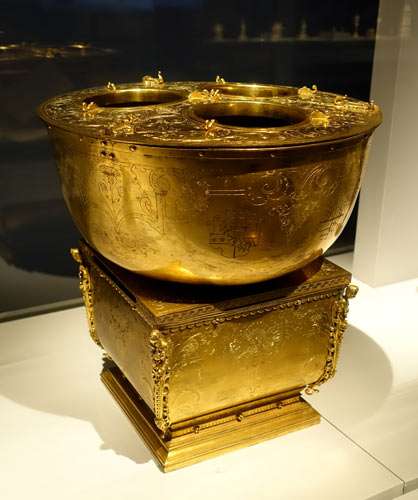
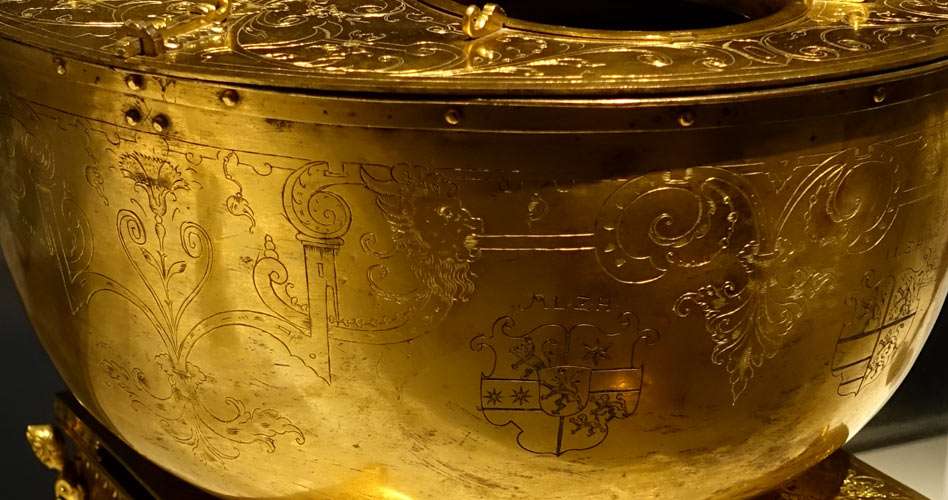
|
Alchemical Furnace of Augustus, Elector of Saxony, Dresden, Germany This ornate alchemical oven was made around 1575. It is made of cast steel, chamotte, lined with firebrick, and decorated with mythological scenes incised on brass plates. Dimensions: 14 7/8" × 13 9/16" × 13 9/16" (37.8 × 34.5 × 34.5 cm). Although very ornate because it was made for an Elector, it was the same type of oven used by alchemists at the time, as shown in the engraving. taken from Lazarus Ercker’s Beschreibung allerfürnemisten mineralischen Ertzt unnd Bergkwercks Arten (1598). This furnace is the only surviving instrument from the alchemical laboratory founded by Elector Augustus in 1556. It was designed for assaying, heating metallic bodies to determine the proportions of their constituent metals, a process used in both mining operations and efforts to make gold. Alchemists believed occult connections between the heavens and the earth influenced the development of ore. Accordingly, the furnace features the seven planetary gods and their metallic counterparts, most prominently the sun, the moon, and Mercury. That triad reflects the recurrence of gold, silver, and mercury as main ingredients in alchemical recipes. Photos credit: the Kunstgewerbemuseum, Staatliche Kunstsammlungen Dresden. |
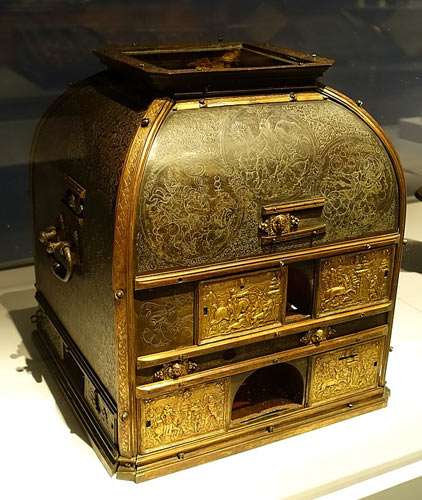
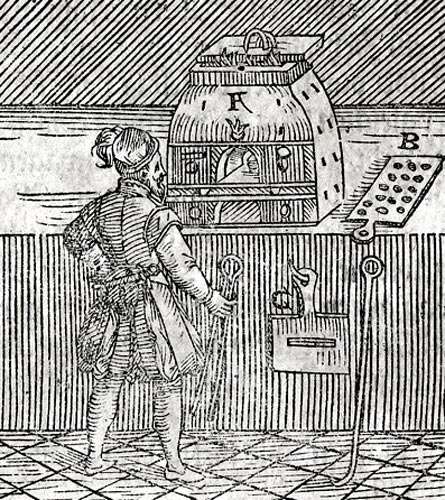
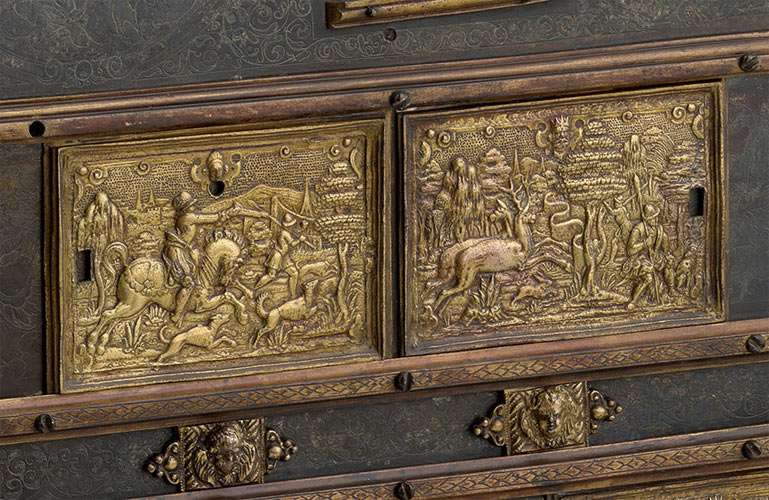
detail of the oven (Photo (c) Bruce Guthrie)